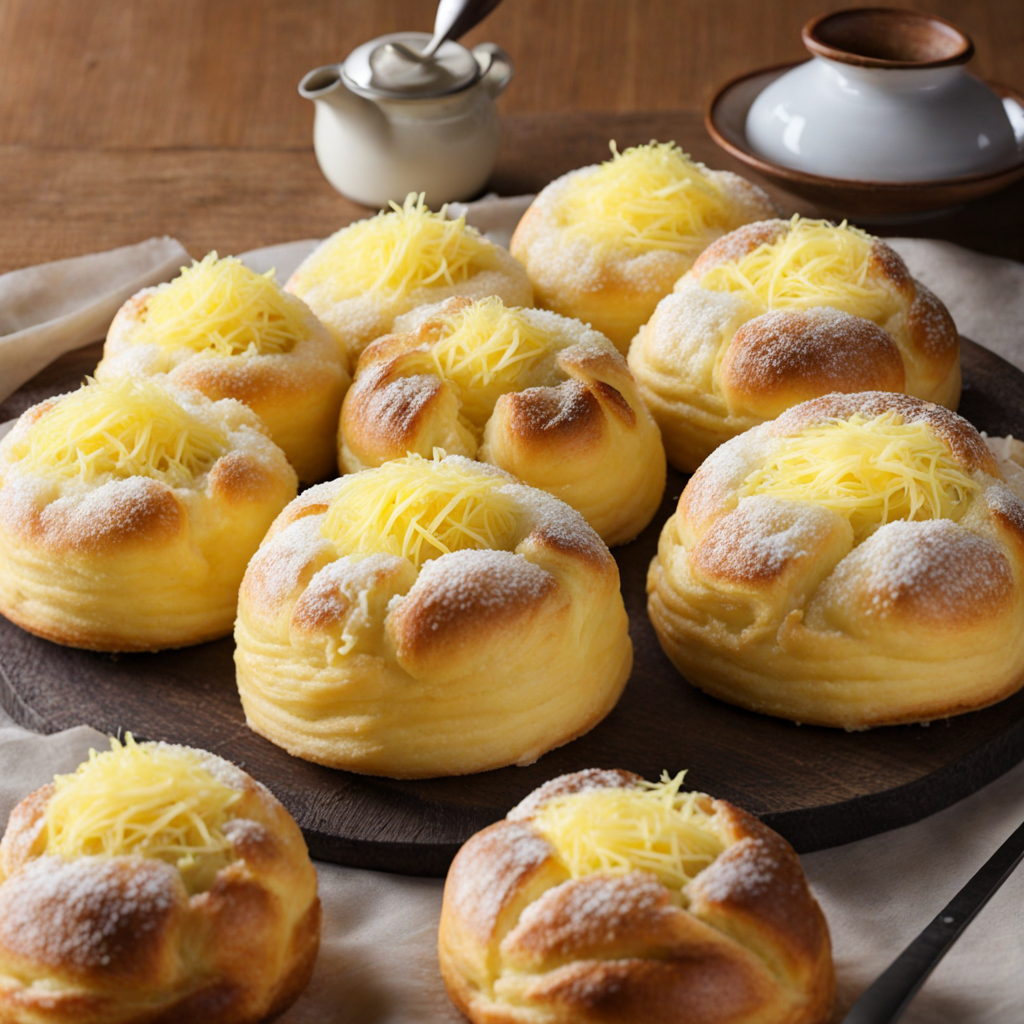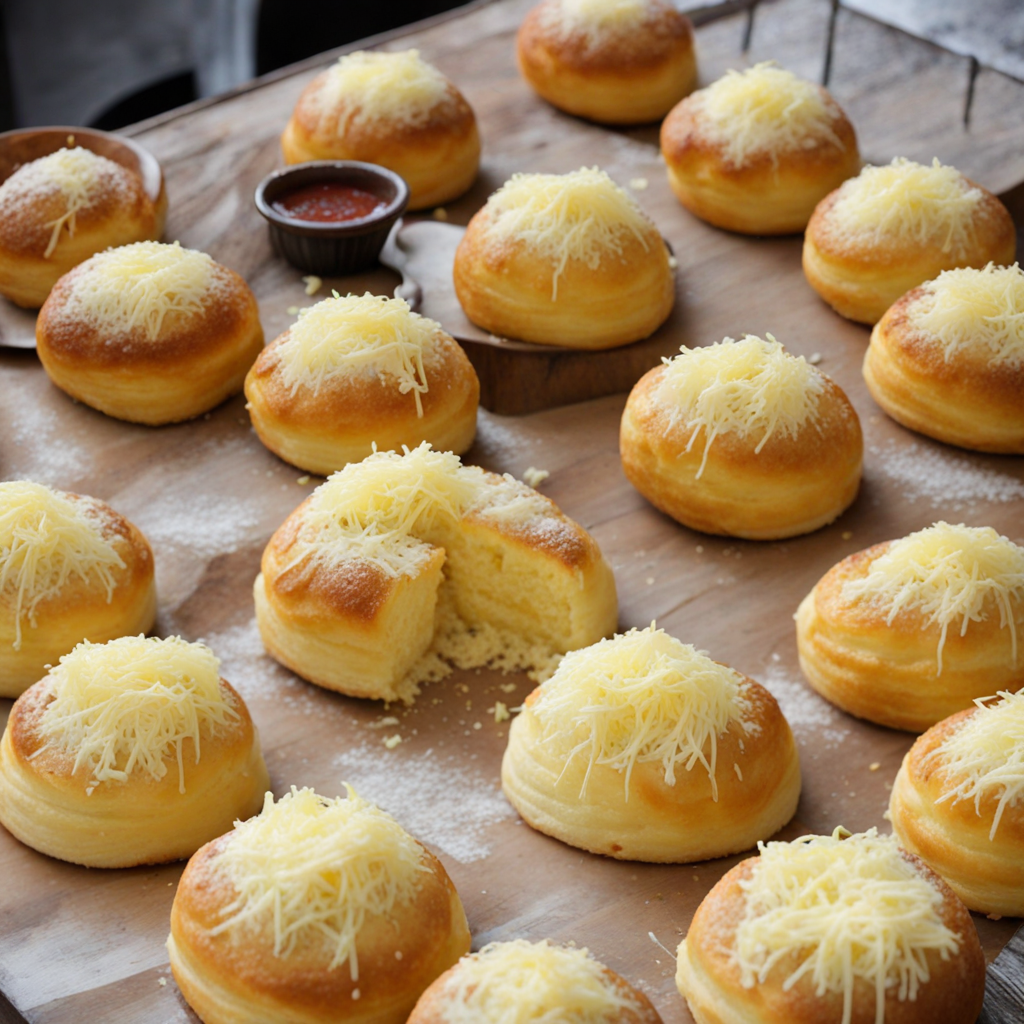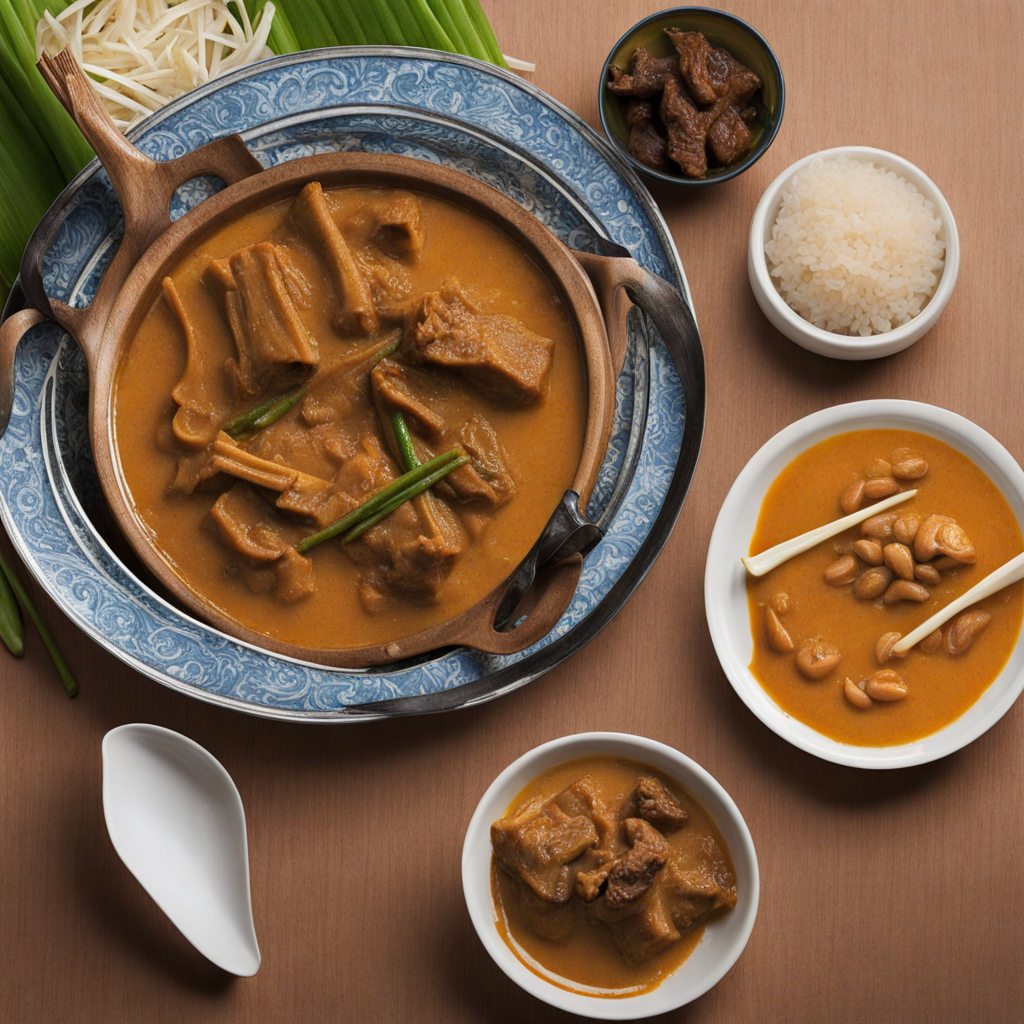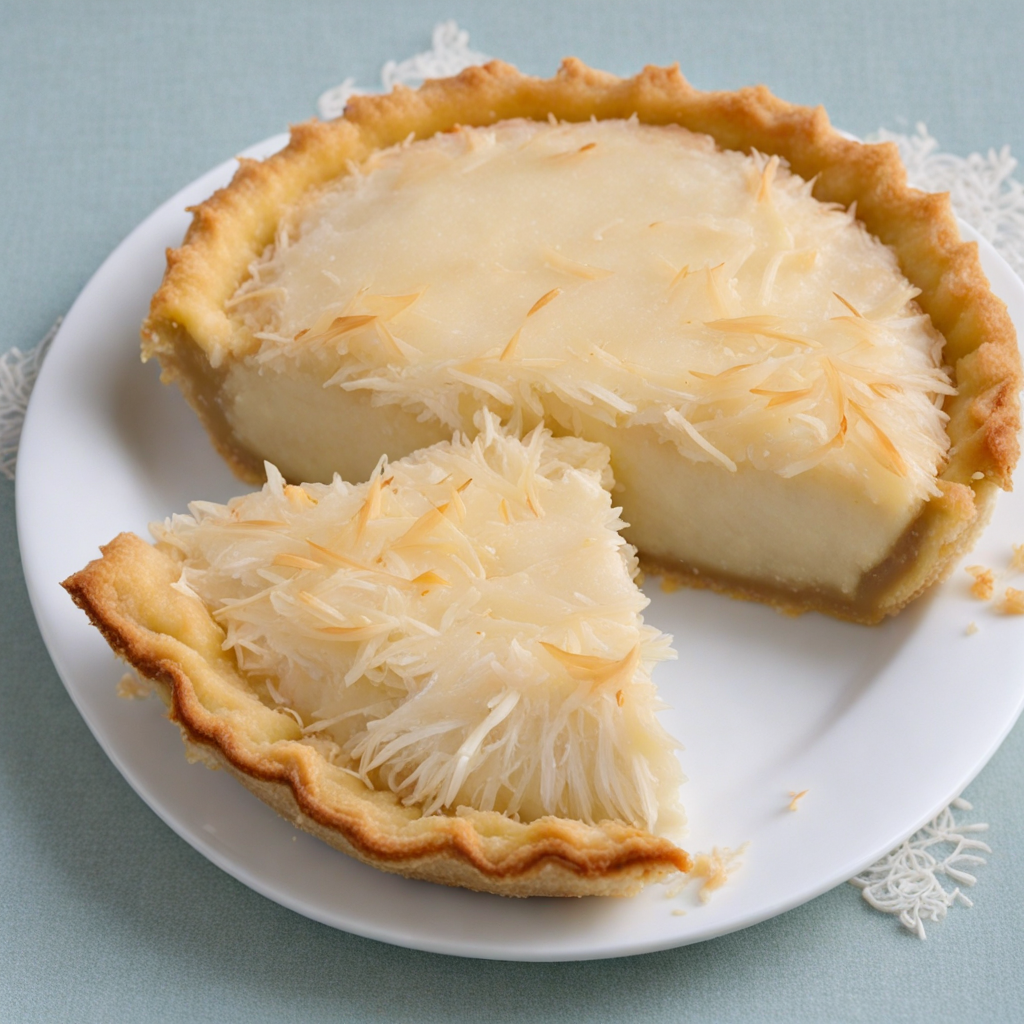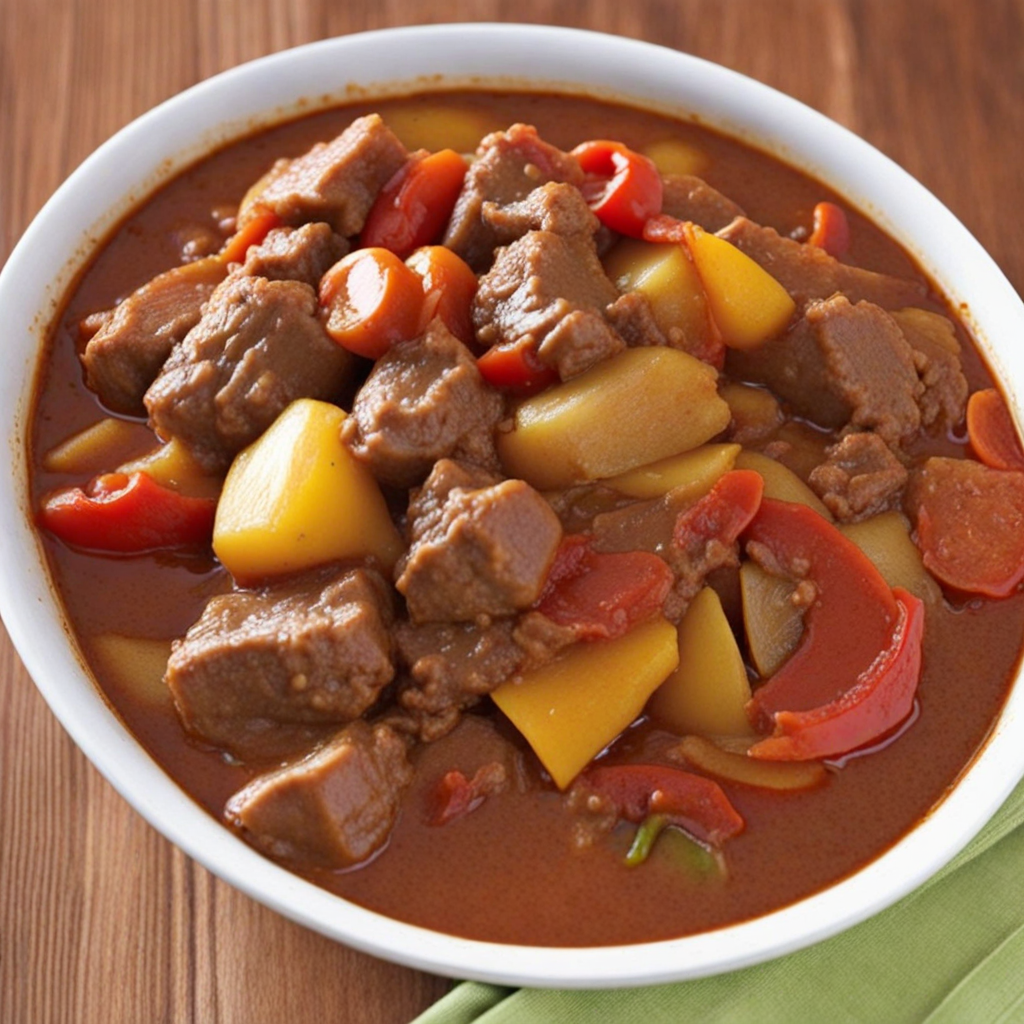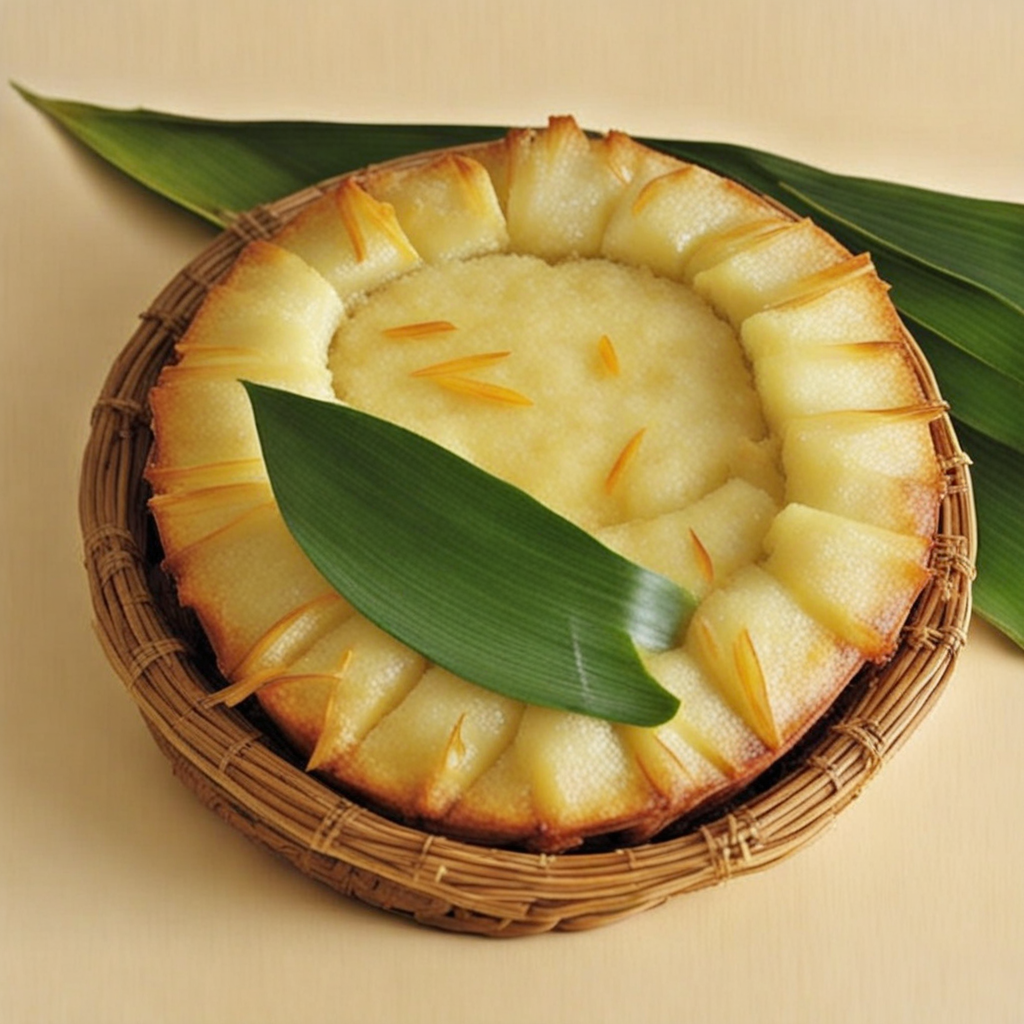Ensaymada
Ensaymada is a delightful Filipino pastry that embodies the rich culinary heritage of the Philippines. This sweet, soft, and fluffy bread is made from a brioche-like dough that is enriched with butter, eggs, and sugar, resulting in a texture that is both airy and tender. Traditionally shaped into a spiral or coil, the ensaymada showcases a beautiful golden-brown exterior, hinting at the warmth and decadence that lies within. Each bite offers a melt-in-your-mouth experience, making it a beloved treat for both locals and visitors alike. What sets ensaymada apart is its lush topping of butter, sugar, and grated cheese, which creates a harmonious balance of sweet and savory flavors. The combination of the creamy butter and the sharpness of the cheese adds depth to the already rich bread. Some variations even include a sprinkle of grated coconut or a drizzle of condensed milk, enhancing the overall indulgence of this pastry. This layering of flavors makes ensaymada a versatile treat, whether enjoyed as a breakfast item, an afternoon snack, or a dessert. Typically enjoyed with a cup of coffee or hot chocolate, ensaymada is not just a food item; it’s an experience that evokes feelings of warmth and nostalgia. It's often made for special occasions, family gatherings, or festive celebrations, making it a cherished part of Filipino culture. As you take your first bite of ensaymada, you’ll be transported to the vibrant streets of the Philippines, where the aroma of freshly baked goods and the joy of shared meals come alive.
How It Became This Dish
The History of Ensaymada: A Filipino Culinary Delight The ensaymada is a beloved pastry in the Philippines, characterized by its soft, fluffy texture, sweet buttery flavor, and a delightful topping of grated cheese and sometimes a sprinkle of sugar. This iconic treat has a rich history that reflects the diverse cultural influences that have shaped the Filipino culinary landscape over centuries. #### Origins: Spanish Influence The origins of ensaymada can be traced back to Spain, where a similar pastry called "ensaimada" hails from the Balearic Islands, particularly Mallorca. The name itself derives from the Spanish word "saïm," meaning lard, which is a key ingredient in the traditional ensaimada. This spiral-shaped pastry, known for its airy layers and sweet taste, was brought to the Philippines during the Spanish colonization, which began in the late 16th century. The Spanish influence on Philippine cuisine is profound, with many traditional dishes and pastries showcasing this heritage. Ensaymada quickly adapted to local tastes and ingredients, becoming a staple in Filipino households. The transformation of the ensaimada into ensaymada reflects the melding of cultures, as Filipinos infused their own culinary sensibilities into the recipe. #### Cultural Significance Ensaymada is not just a pastry; it holds a special place in Filipino culture and tradition. It is often associated with celebrations, holidays, and significant life events. In many Filipino households, it is customary to serve ensaymada during festive occasions such as Christmas, birthdays, and weddings. Its soft, sweet nature makes it a fitting treat for joyous celebrations. Moreover, ensaymada is commonly enjoyed during merienda, the Filipino snack time that occurs in the late afternoon. It pairs wonderfully with hot chocolate, coffee, or tea, making it a popular choice for casual gatherings with family and friends. The act of sharing ensaymada during these moments strengthens social bonds and fosters a sense of community. #### Evolution Over Time As the ensaymada became a part of Filipino culinary tradition, it underwent various adaptations that reflect regional preferences and local ingredients. While the classic ensaymada is made with flour, sugar, eggs, and butter, regional variations have emerged, each adding its unique touch to the pastry. In the Visayas region, particularly in Cebu, the ensaymada is often larger and denser, sometimes featuring a rich filling of cheese or a sweet paste made from coconut. Cebuanos pride themselves on their version, which has gained recognition and popularity not only locally but also internationally. Ensaymada de Cebu has become a sought-after delicacy, often packaged beautifully for gifts and souvenirs. Another notable variant is the ensaymada from Pampanga, known as the culinary capital of the Philippines. Pampanga's ensaymada is characterized by its fluffy texture and is often topped with a generous amount of grated cheese and butter, making it richer than other versions. This region has also contributed to the innovation of the ensaymada by incorporating local flavors and ingredients, such as ube (purple yam) and pandan, resulting in colorful and flavorful variations that appeal to a wider range of palates. #### Modern Interpretations In recent years, the ensaymada has continued to evolve with the influence of contemporary culinary trends. Modern bakers and chefs have experimented with flavors, incorporating ingredients like matcha, chocolate, and even local fruits into the dough. These innovations have breathed new life into the classic pastry, attracting a younger generation of food enthusiasts and elevating ensaymada to gourmet status. Furthermore, the rise of artisanal bakeries has led to a renewed appreciation for traditional methods of preparation. Many bakers are returning to the roots of ensaymada, using high-quality ingredients and time-honored techniques to create a pastry that honors its heritage while appealing to modern tastes. This resurgence has sparked interest in culinary tourism, with people traveling to different regions in search of the best ensaymada. #### Social and Economic Impact The ensaymada is not only a culinary symbol but also a source of livelihood for many Filipinos. Small bakeries and home-based businesses have flourished, providing employment opportunities and contributing to local economies. The popularity of ensaymada has also encouraged the revival of traditional baking techniques, ensuring that the craft is passed down through generations. Additionally, the rise of social media has played a significant role in promoting ensaymada. Food bloggers and influencers have showcased the beauty and deliciousness of this pastry, driving interest both locally and abroad. As a result, ensaymada has found its way into international markets, introducing the world to this delightful Filipino treat. #### Conclusion The ensaymada is more than just a pastry; it is a testament to the Philippines' rich cultural heritage and history. From its Spanish origins to its evolution into a beloved Filipino delicacy, ensaymada embodies the spirit of adaptation and innovation that characterizes Filipino cuisine. Its presence at celebrations, its role in fostering community, and its potential for culinary creativity make it a cherished part of Filipino identity. As we savor an ensaymada, we partake in a delicious narrative that spans centuries, reflecting the diverse influences that have shaped the Philippines. Whether enjoyed in its traditional form or as part of a modern twist, ensaymada remains a symbol of warmth, hospitality, and the joy of sharing good food with loved ones. In every bite, we taste the history, culture, and creativity of the Filipino people—a legacy that continues to thrive and evolve.
You may like
Discover local flavors from Philippines


